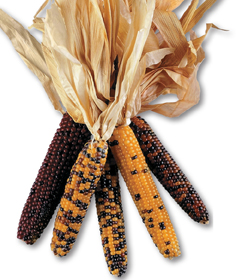Sources of Genetic Variation
 What are the sources of genetic variation?
What are the sources of genetic variation?
Genetics enables us to understand how heritable variation is produced.  Three sources of genetic variation are mutation, genetic recombination during sexual reproduction, and lateral gene transfer.
Three sources of genetic variation are mutation, genetic recombination during sexual reproduction, and lateral gene transfer.
Mutations A mutation is any change in the genetic material of a cell. Some mutations involve changes within individual genes. Other mutations involve changes in larger pieces of chromosomes. Some mutations—called neutral mutations—do not change an organism's phenotype.
Mutations that produce changes in phenotype may or may not affect fitness. Some mutations, such as those that cause genetic diseases, may be lethal. Other mutations may lower fitness by decreasing an individual's ability to survive and reproduce. Still other mutations may improve an individual's ability to survive and reproduce.
How common are mutations? Recent estimates suggest that each of us is born with roughly 300 mutations that make parts of our DNA different from that of our parents. Most of those mutations are neutral. One or two are potentially harmful. A few may be beneficial.
Note that mutations matter in evolution only if they can be passed from generation to generation. For that to happen, mutations must occur in the germ line cells that produce either eggs or sperm. A mutation in skin cells that produces a nonlethal skin cancer, for example, will not be passed to the next generation.

FIGURE 17–3 Genetic Variation Genetic variation may produce visible variations in phenotype, such as the different-colored kernels in these ears of maize. Other kinds of genetic variation, such as resistance to disease, may not be visible, even though they are more important to evolutionary fitness.
Genetic Recombination in Sexual Reproduction Mutations are not the only source of heritable variation. You do not look exactly like your biological parents, even though they gave you all your genes. You probably look even less like any brothers or sisters you may have. Yet no matter how you feel about your relatives, mutant genes are not primarily what makes them look so different from you. Most heritable differences are due not to mutations, but to genetic recombination during sexual reproduction. Remember that each chromosome in a pair moves independently during meiosis. In humans, who have 23 pairs of chromosomes, this process can produce 8.4 million gene combinations!
Crossing-over is another way in which genes are recombined. Recall that crossing-over occurs during meiosis. In this process, paired chromosomes often swap lengths of DNA at random. Crossing-over further increases the number of new genotypes created in each generation. You can now understand why, in species that reproduce sexually, no two siblings (except identical twins) ever look exactly alike. With all that independent assortment and crossing-over, you can easily end up with your mother's eyes, your father's nose, and hair that combines qualities from both your parents. You can also now understand why, as Darwin noted, individual members of a species differ from one another.
 In Your Notebook Which source of variation brings more diversity into a gene pool—mutation or sexual reproduction? Explain.
In Your Notebook Which source of variation brings more diversity into a gene pool—mutation or sexual reproduction? Explain.
MYSTERY CLUE

The genes of flu viruses have very high mutation rates. How might this affect the amount of variation in the viral gene pool?
Table of Contents
- Formulas and Equations
- Applying Formulas and Equations
- Mean, Median, and Mode
- Estimation
- Using Measurements in Calculations
- Effects of Measurement Errors
- Accuracy
- Precision
- Comparing Accuracy and Precision
- Significant Figures
- Calculating With Significant Figures
- Scientific Notation
- Calculating With Scientific Notation
- Dimensional Analysis
- Applying Dimensional Analysis




